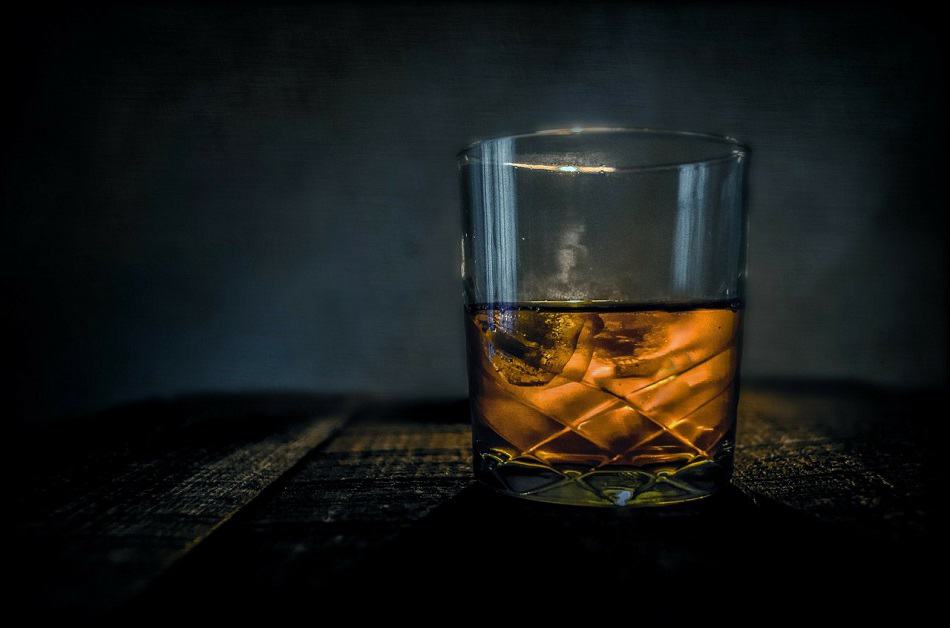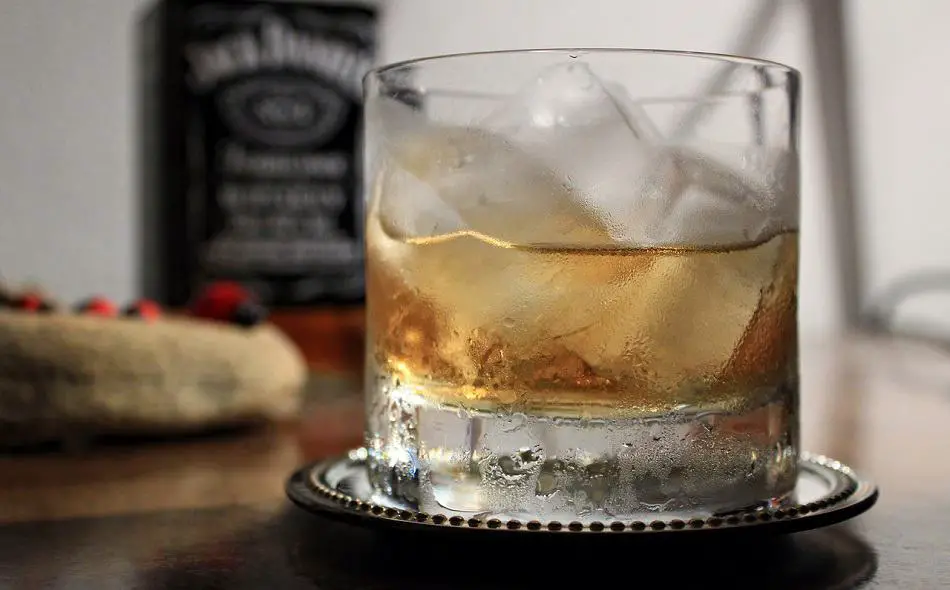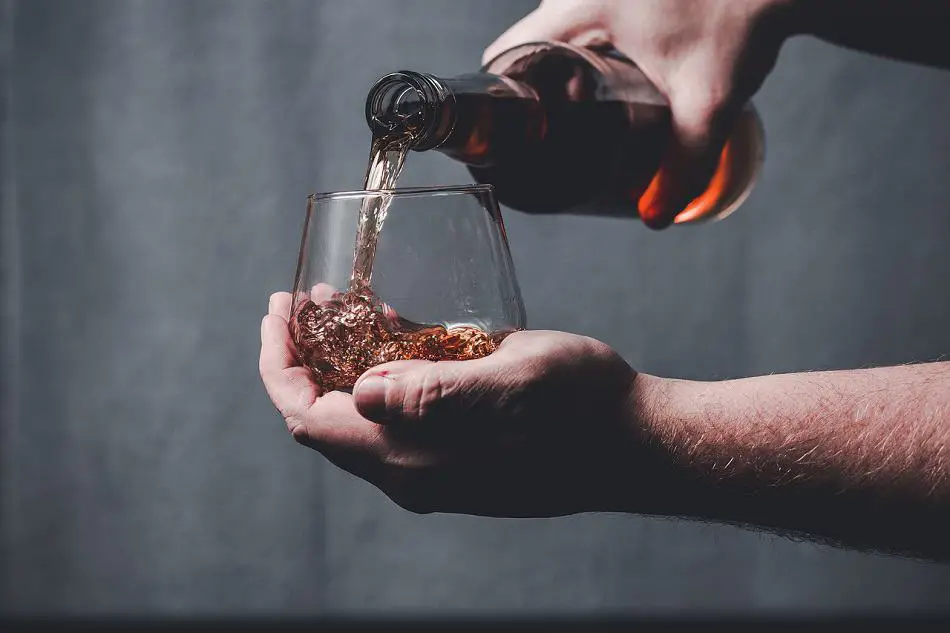Whiskey is known for having a glossy and golden appearance, so it’s only natural for people to wonder what’s going on when it becomes cloudy. The truth is that it’s a perfectly normal thing to happen, it’s not a problem and it’s very easy to fix.
So why does whiskey go cloudy? Whiskey goes cloudy because it contains fatty acids, esters and proteins that dissolve in alcohol but not in water. When the alcohol concentration becomes low enough these molecules un-dissolve and clump together, making the whiskey cloudy. Chilling whiskey to lower than room temperature, can also cause this un-dissolving to occur.
The good news is that a cloudy whiskey does not mean a faulty, inferior or ruined whiskey. Also, it’s possible to remove the haze and restore the original golden appearance of your whiskey.
Many distilleries chill filter (explained below) their whiskeys to prevent any clouding from occurring in the first place. These are perfect if you want a whiskey that will never lose its glossy, golden hue. However, some argue that this also strips the whiskey of some of its flavors.

How Whiskey Becomes Cloudy
Whiskey is made up of water and ethanol, but it also contains natural fatty acids, esters and proteins. They come from the barley that was used to make the alcohol, and the wood of the casks used to transfer flavor to the whiskey, in the maturation process.
These fatty acids, esters and proteins dissolve in alcohol but not in water. Since most whiskeys contain anywhere between 40%ABV – 68%ABV these molecules will be dissolved in the alcohol and won’t affect the clarity or color of the whiskey.
However, if the alcohol concentration decreases to a low enough level, that is less than 46%ABV, where there’s not enough alcohol to keep the fatty acids, esters and proteins together, they will un-dissolve, becoming separate from the alcohol. Since they are unable to dissolve in water, they will clump together in a special arrangement known as micelles and once there are enough of them, make your whiskey cloudy.
This doesn’t mean that as soon as every whiskey hits less than 46%ABV it will become cloudy. It all depends on the type and amount of fatty acids, esters and proteins contained in the whiskey which in turns depends on how it was made. If the amount of fatty acids, esters and proteins are low, then the un-dissolving process could take too long, or the level of cloudiness created could be too imperceptible to matter.
And some types of fatty acids, esters and proteins can remain dissolved in concentrations of alcohol lower than 46%ABV and will only un-dissolve when the alcohol is less than, say 43%ABV. So the speed a whiskey becomes cloudy, the level of cloudiness and the ABV at which the clouding process begins will vary depending on the whiskey.
There is a second way this un-dissolving can occur and that is if the whiskey drops below room temperature. This is true even if the level of alcohol remains high and above 46%. If a whiskey is chilled it causes the fatty acids, esters and proteins to separate from the ethanol, clump together and make your whiskey cloudy.

All this means that sometimes it’s our own fault when our whiskey becomes cloudy. Many people like to add water or ice to whiskey and while there are very good reasons for both practices (though not at the same time), you need to be careful because too much dilution and too much chilling will lead to cloudy whiskey.
Sometimes however, whiskey will become clouded not because we added water or ice but because some of the alcohol has evaporated.
Since ethanol evaporates at a lower temperature than water, the alcohol part of a whiskey will evaporate quicker than the water part. This means that evaporation causes the ABV of a whiskey to be reduced. That’s why if you have a whiskey with 46%ABV and you leave a glass of it out overnight, it becomes cloudy. There has been just enough evaporation to reduce the alcohol level in the whiskey.
The same is true for a whole bottle of whiskey. Once a bottle of whiskey has been unsealed and opened, and air has gotten to the whiskey, evaporation begins. This is true even if you close the bottle tightly between pours, although that does obviously slow the process. Eventually, the evaporation will reduce the alcohol level to less than 46% and the whiskey will start to go cloudy.
Cloudy Whiskey Doesn’t Mean Bad Whiskey
If your whiskey is cloudy it doesn’t mean it’s gone bad or that it’s faulty or inferior in any way. It just means that the above mentioned un-dissolving process has occurred and consequently your whiskey won’t have the classic, glossy, golden look most people expect a whiskey to have.
It also doesn’t mean that the taste of the whiskey is ruined. In fact, it may mean that your whiskey will taste even better! After all, some of the whiskey’s flavors come from these fatty acids, esters and proteins in the first place. Now that they’ve been liberated from the alcohol, you’ll be able to taste them.
This is one of the reasons why people add water to whiskey. To open up new and more subtle flavors that are contained in the molecules that un-dissolve when the alcohol level is reduced. Presumably there’s no worry about clouding because the aforementioned new flavors will lead to the whiskey being drunk before that can occur.
How to Restore Cloudy Whiskey to Its Original Golden Color
Happily, it’s possible to fix this problem and return a cloudy whiskey to its original state.
Since whiskey becomes cloudy because of the un-dissolving of fatty acids, esters and proteins, re-dissolving them again will cause the haze to disappear and restore your whiskey’s golden color.
If the un-dissolving was caused by a reduction of alcohol content, due to added water or evaporation, then you’ll need to add a bit / a lot more whiskey to your drink. The increase in alcohol content will cause the fatty acids, esters and proteins to re-dissolve and the cloudiness to disappear.
If the un-dissolving was caused because you chilled your whiskey, allowing it to return to normal room temperature will cause the fatty acids, esters and proteins to re-dissolve and your whiskey’s original golden appearance to be restored.

Chill Filtered Whiskey Will Not Become Cloudy
Many whiskeys are put through a process called chill filtration to ensure that they will never become cloudy.
This is necessary despite the fact that being cloudy doesn’t affect a whiskey’s taste and that it’s very easy to fix, because many people mistakenly think that unless their whiskey has that classic golden color, it must be faulty or inferior.
To prevent this, distilleries chill filter many or most of their whiskeys, in a process that’s exactly what it sounds like.
Whiskey is chilled to somewhere between -10⁰C and +4⁰C so that the fatty acids, esters and proteins will un-dissolve. The chilled whisky is then passed through a series of compact metallic meshes or paper filters under pressure to filter out the clumps that form the cloudy haze.
Now when you add water or ice at home, the molecules that would have un-dissolved and clumped together to make your whiskey cloudy, are no longer present to do so and your whiskey will remain glossy golden.
Therefore, if you want to ensure that your whiskey will never go cloudy, all you need to do is buy a whiskey that has been chill filtered.
The only problem is that this has led to a huge debate about whether chill filtering whiskey strips it of some of its taste.
Some argue that it does because the filtered out fatty acids, esters and proteins contained a lot of flavor, while others claim that chill filtered whiskeys taste the same as non-chill filtered whiskeys because when chill filtration is done carefully no flavors are lost.
This is something that’s difficult to know the answer to because it’s difficult to test. There aren’t many distilleries that create two batches of the same whiskey, one chill filtered and the other not.
The best way to decide would be to do your own test. Pour some non-chill filtered whiskey into a new (clean) bottle, chill it until it becomes cloudy, pour it through some filter paper, wait until it returns to room temperature and do a taste comparison with the part of the bottle that wasn’t chill filtered.

